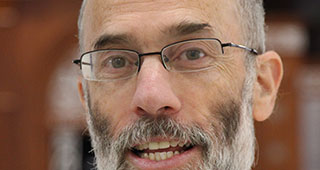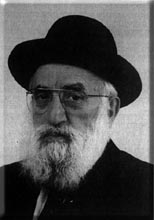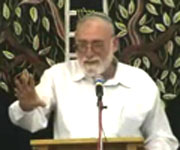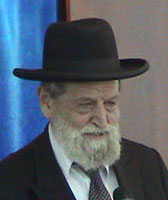Beit Midrash
- Sections
- Chemdat Yamim
- Parashat Hashavua
- Torah Portion and Tanach
- Shmot
- Shmot
The big "losers" (for lack of a better word) in the question of who would have prominence in the family/nation were Reuven, Shimon, and Levi. None of them got a positive individual blessing at the end of their father’s life, and they were actually scolded. Reuven lost the status of leader by virtue of his being the biological firstborn, despite the valiant repentance he did for his sin. Yaakov asked to distance himself from Shimon and Levi because of his great abhorrence for some of their actions (i.e., the slaughter of the people of Shechem and the sale of Yosef).
Yet, in our parasha, the Torah begins the story of Moshe Rabbeinu with "An ish (man) from the House of Levi went and took the daughter of Levi." Throughout Tanach (in the narrative, not the halachic sections) ish is used to describe an important person, who is a leader on some level. Examples include Elkana, the father of Shmuel (Shmuel I, 1:1), and Mordechai (Esther 2:5). In the case of Amram, Chazal tell us that he was the leader of his generation (Shemot Rabba 1). Thus, we see a surprise, that the mantle of leadership did make it to the hands of Levi despite his apparent relegation to the list of the disfavored. Let us see how this happened.
During the end of the story of Bereishit and the emergence of Moshe Rabbeinu, the leadership was in the hands of the Sons of Ephrayim. They continued the connection to Eretz Yisrael, even as they were princes in Egypt (see Divrei Hayamim I, 7:20-24). They also were the ones who tried to return Bnei Yisrael to Eretz Yisrael prematurely (see Mechilta D’Rabbi Yishmael, Beshalach). This was based on the legacy they received from Yosef, who was praised as being one who always mentioned his connection to the Land. Because the Sons of Ephrayim tried to force the redemption before the time had come, a new leadership sprang forth.
The zealous Levites grabbed the mantle of leadership. They focused their energies on preserving the uniqueness of the family/nation and preventing assimilation in the foreign land. They did not do this by attacking others, but by internal strengthening. The midrash stresses the connection between the children of Amram and the care not to assimilate. "The three types of olah sacrifices correspond to the three good leaders that Hashem gave the people in Egypt: Moshe, Aharon, and Miriam. Others say that it corresponds to the three good characteristics the people had in Egypt, in whose merit they were liberated: that they did not change their names, did not change their language, and were careful in matters of illicit relations (Bamidbar, Naso 13).
Let us pray that we too will merit internal peace between brothers and leaders like Moshe, Aharon, and Miriam.

Parashat Hashavua: From Paroh to Hamas and Iran – In Those Days at this Time
Rabbi Yossef Carmel | Kislev 5786

What is Mishpat Tzedek?
Rabbi Daniel Mann | Elul 1 5777

“Yerushalayim, the City That Was Connected Together”
Rabbi Yossef Carmel | 29 IYAR 5769























